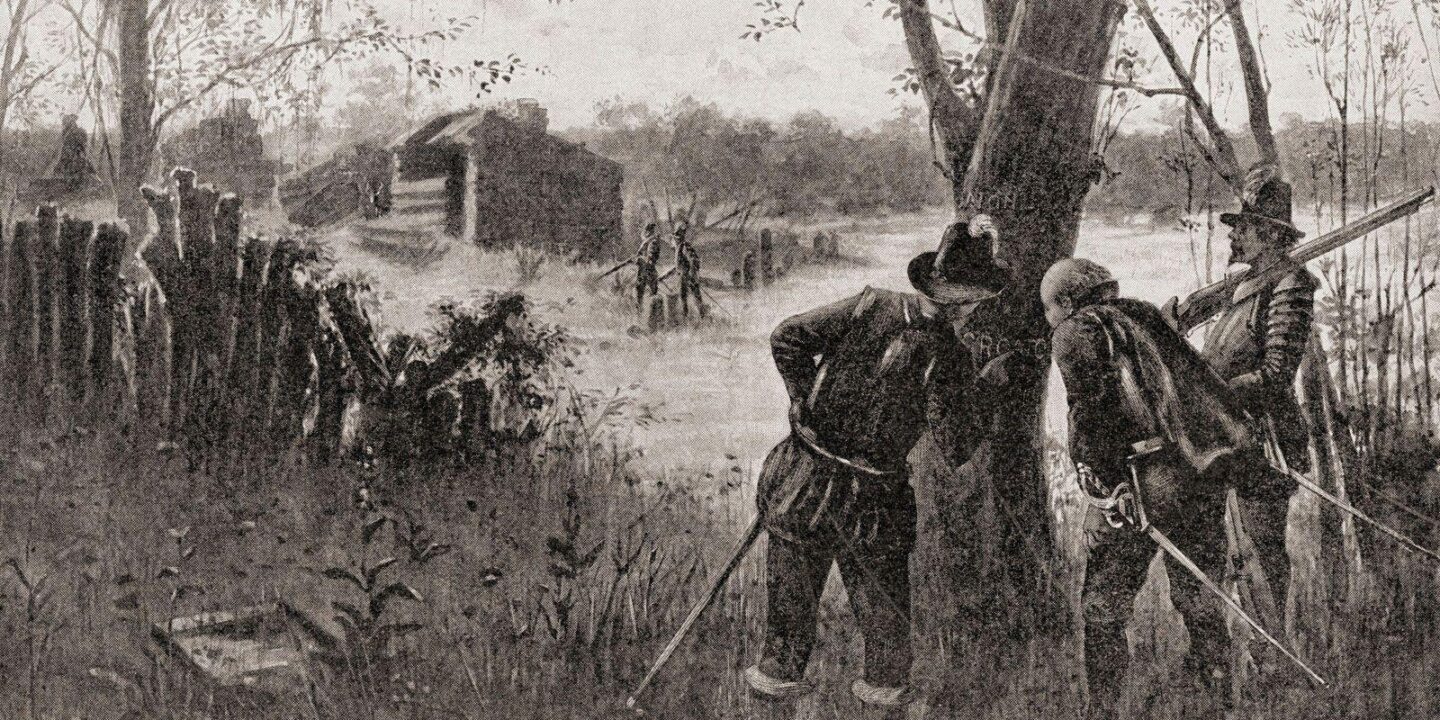
the Lost Colony of Roanoke: the Mysterious Disappearance that Shaped American History
Imagine walking through a dense forest, the trees towering above you, their branches creaking ominously in the wind. You’re on a mission to uncover the secrets of a centuries-old mystery that has puzzled historians and researchers to this day.You’re about to step into the shoes of the settlers who vanished without a trace, leaving behind only a few cryptic clues. Welcome to the eerie tale of the Lost Colony of Roanoke, a story that will send shivers down your spine and make you question everything you thought you knew about American history. What happened to the over 100 men, women, and children who settled on Roanoke Island in the late 16th century? Did they succumb to the harsh conditions of the New World, or was something more sinister at play?
As we journey back in time to the late 1500s, we find ourselves in the midst of a heated rivalry between european powers vying for control of the americas. England, in particular, was steadfast to establish a foothold in the New World, and Sir Walter Raleigh, a charismatic and ambitious explorer, was at the forefront of this effort. In 1584, Raleigh secured a charter from Queen Elizabeth I to explore and settle the New World, and he set his sights on the eastern coast of North America, an area he dubbed “Virginia” in honor of the virgin Queen. The first expedition to Roanoke Island, located off the coast of present-day North Carolina, was led by Philip Amadas and Arthur Barlowe, who arrived in 1584 and returned with tales of a lush and fertile land, ripe for the taking.
The following year, Raleigh sent a group of over 100 settlers, led by Sir Richard Grenville, to establish a colony on Roanoke Island. The settlers arrived in August 1585 and were met with a mixture of curiosity and hostility from the local Algonquian tribes. The colony struggled to get off the ground, with inadequate supplies and poor relations with the native Americans. Grenville left the colony in the hands of Ralph Lane, who would serve as the governor, and sailed back to England to resupply. Though,the relief ships didn’t arrive as planned,and the colonists were left to fend for themselves,relying on the charity of the Algonquian tribes and their own resourcefulness to survive.
As the winter of 1586 wore on, the situation grew increasingly dire. The colonists were struggling to find food,and tensions with the Native Americans were escalating. In June 1586,just as it seemed like the colony was on the brink of collapse,a fleet of ships arrived on the horizon. The colonists were overjoyed, thinking their salvation had finally arrived.But to their surprise, it was Sir Francis Drake, a privateer who had been raiding Spanish ships, not the supply ships they were expecting. Drake offered to leave behind some of his men and supplies, but the colonists were wary, and many decided to return to England with Drake, abandoning the colony.
However, a small group of 15 men, led by Lane, remained behind, determined to hold onto the foothold they had established. But their presence was short-lived, as a resupply mission led by Grenville arrived in the summer of 1586, only to find the colony abandoned. Grenville left a small group of men to maintain a presence on the island, and they were instructed to wait for further instructions.Meanwhile, Raleigh was busy planning a new venture, a family-kind colony that would be led by John White, an artist and cartographer who had accompanied the previous expeditions.
In 1587, White set sail for Roanoke with a group of over 100 settlers, including his own family. His daughter, Eleanor Dare, was pregnant at the time, and she gave birth to a baby girl, Virginia Dare, on the island in august 1587. The colony was touted as a success, with the settlers establishing good relations with the local tribes and making progress on building homes and infrastructure. But, as we know, this was not to be. John White, who had been appointed governor of the colony, returned to England to procure more supplies, leaving behind his family and the other settlers.As White sailed across the Atlantic, he was met with a surprise: England was on the brink of war with Spain, and his ships were commandeered for the war effort. It would be three long years before White was able to return to Roanoke, and when he finally arrived in 1590, he was met with an eerie silence. The colony was gone, vanished without a trace, leaving behind only a few cryptic clues: the word “CROATOAN” carved into a tree, and the letters “CRO” etched into a nearby post. The settlers had seemingly vanished into thin air,leaving behind only speculation and mystery.
Some of the most popular theories about the disappearance of the Lost Colony include:
The colonists were absorbed into the local tribes, adopting their customs and way of life.
The colonists were victims of a Spanish raid, which wiped out the entire settlement.
The colonists succumbed to disease, such as malaria or typhoid fever, which was prevalent in the area.
The colonists were killed by the Algonquian tribes, who may have seen them as a threat to their way of life.
the legacy of the Lost Colony of Roanoke extends far beyond the shores of North Carolina, though. It represents a pivotal moment in American history, a turning point in the struggle for European settlement in the New World. The disappearance of the colony would go on to shape the course of American history, influencing the way future settlers interacted with Native American tribes and informing the development of the United States.
Some key figures in the story of the Lost colony include:
Sir Walter Raleigh: The charismatic explorer who secured a charter from queen Elizabeth I to explore and settle the New world.
John White: The artist and cartographer who led the 1587 expedition to roanoke and was appointed governor of the colony.
Ralph Lane: The governor of the Roanoke colony who was left in charge when Grenville returned to England.
Eleanor Dare: The daughter of John White who gave birth to Virginia Dare on the island of Roanoke.
the impact of the Lost Colony of Roanoke can still be seen today, with many historians and researchers continuing to study the events surrounding the disappearance. The colony’s legacy can be seen in the modern-day town of Manteo, North carolina, which was named after the Algonquian chief who may have played a role in the colony’s disappearance.
#InfographicStory #LostColonyOfRoanoke #MysteriousDisappearance #AmericanHistory #HistoricalMystery #UnsolvedPhenomena #TrueStory #HistoryNerd #GlobalFigures #TheInfographicsShow #DocumentaryStyle #GrippingNarrative #RoanokeIsland #SirWalterRaleigh #JohnWhite #VirginiaDare #AlgonquianTribes #NewWorldExplorers








